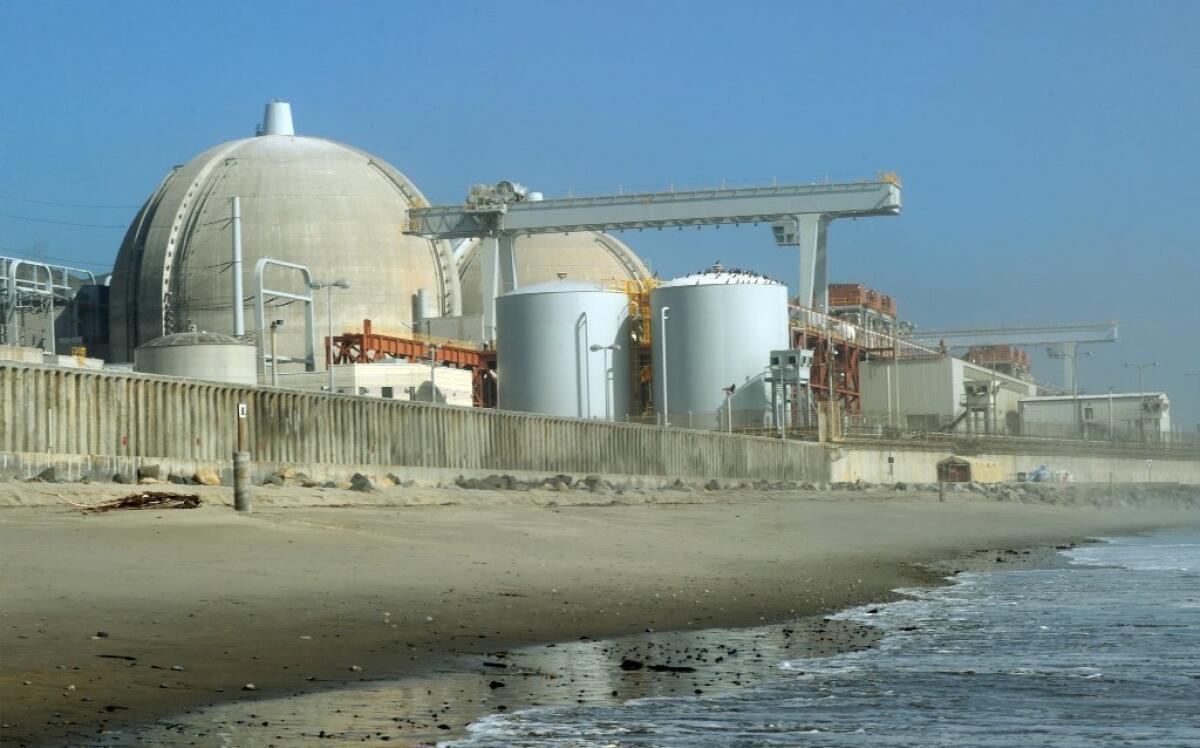Finally, a smart decision on San Onofre

- Share via
Southern California Edison made its smartest decision in a long time by announcing that it would retire the San Onofre nuclear plant.
As evidence has piled up in the nearly year and a half since both Units 2 and 3 went dark, it has pointed more and more strongly to a scenario under which the utility played things too fast and loose with its two new steam generators, which cost $670 million but quickly showed wear in the vast arrays of tubes that were unprecedented in the industry.
Unprecedented because -- as a letter from an Edison official said years ago, though its contents were only recently revealed -- nothing quite like this design had been done before. To Edison’s credit, that was true because the company was trying to produce a safer, better steam generator. It’s also to its credit that utility officials were raising important safety questions during the design and construction of the generators, built by Mitsubishi Heavy Industries.
If only Edison had been that careful when it came to getting the new generators approved by the U.S. Nuclear Regulatory Commission. Instead, it opted to convince the NRC that the new generators were essentially the same as the old ones — which obviously wasn’t true — in an effort to avoid tighter regulatory scrutiny of the design. Had the NRC taken a closer look from the start, there’s a good chance it would have caught the design flaws.
After the units were closed, Edison and the NRC resisted calls for full licensing proceedings before the plant could reopen. Environmentalists challenged them, and a panel of the agency’s internal judges, the Atomic Safety and Licensing Board, recently issued an opinion that full proceedings, with an opportunity for public hearings, were indeed called for. The process would have been a lengthy one, and so the panel’s opinion was a major factor in Edison’s decision not to go forward. Had everyone agreed to the process a year ago, it would be about over by now.
The board also wisely noted that Edison’s proposal to bring one of the units up to 70% power constituted an experiment. There was no way to know whether it would succeed or be safe.
The plant’s licenses would have expired at the end of this decade, and renewing them was never a good idea. Nuclear power, if it belongs anywhere, surely does not belong in an earthquake-prone region located along rising seas.
ALSO:
Feces happens -- but medically, only with FDA approval
Colossal mako shark’s death not something to cheer about
More to Read
A cure for the common opinion
Get thought-provoking perspectives with our weekly newsletter.
You may occasionally receive promotional content from the Los Angeles Times.







